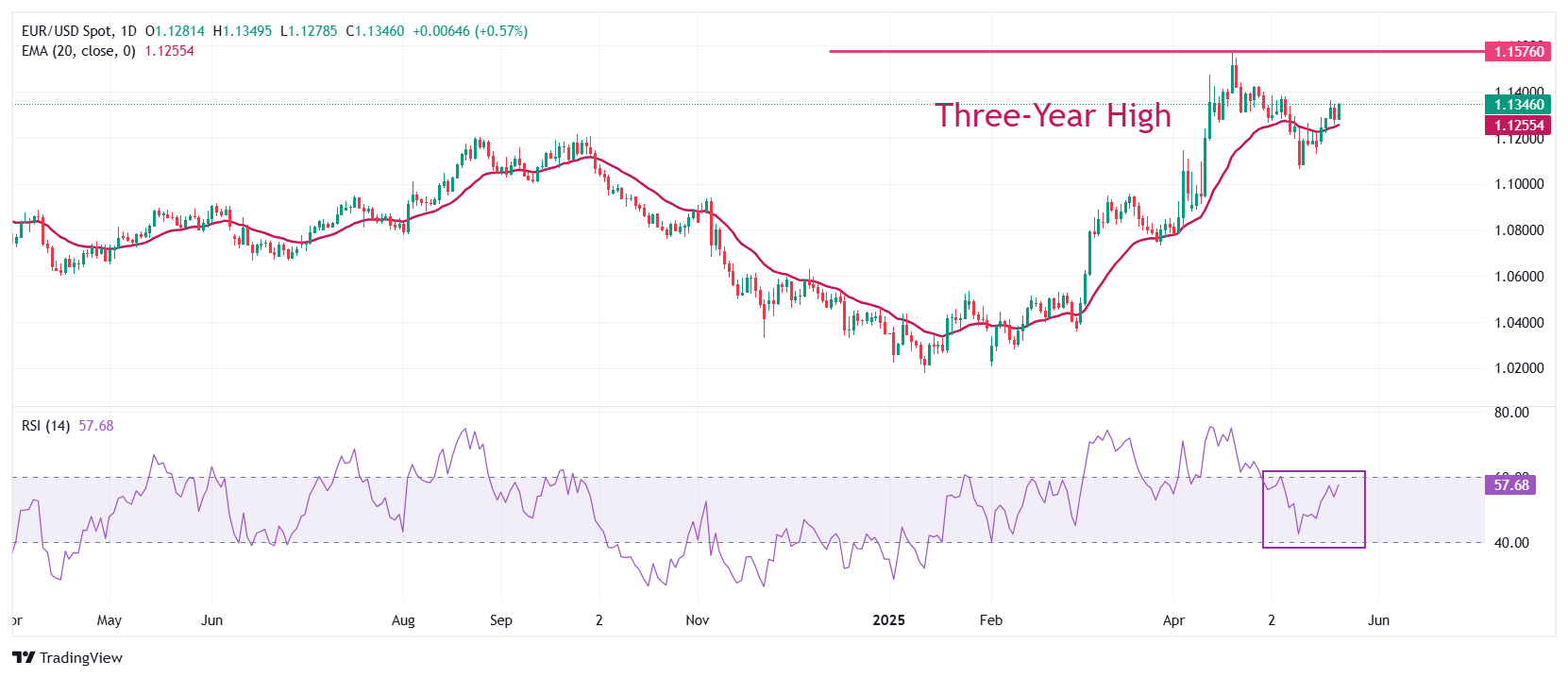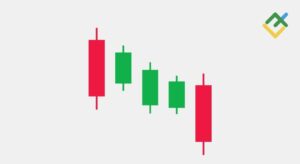EUR/USD gains as Greenback suffers from heightened US fiscal concerns

- EUR/USD jumps to near 1.1380 due to weakness in the US Dollar as concerns over US fiscal imbalances persist.
- US President Trump’s new tax bill is expected to increase the nation’s debt by $3.8 trillion over a decade.
- The uncertainty over a EU-US trade deal escalates as the old continent has not offered unilateral concessions.
EUR/USD resumes its upside journey on Friday after a corrective move the previous day. The major currency pair revisits the three-week high around 1.1380 during European trading hours as the US Dollar (USD) slumps after a short-lived recovery on Thursday. The US Dollar Index (DXY), which tracks the Greenback’s value against six major currencies, declines to near the two-week low around 99.30.
Financial market participants continue to dump the US Dollar as the new tax bill by United States (US) President Donald Trump has increased concerns over the nation’s fiscal health. The new bill comprises tax cuts and higher spending on defense and immigration controls, among others, and it is expected to increase the national debt by $3.8 trillion over the next decade, according to the nonpartisan Congressional Budget Office.
Investors are worried that the additional burden on the nation’s debt could lead to further erosion of the US credit rating. Last week, Moody’s downgraded the US sovereign credit rating by one notch to Aa1 from Aaa, citing the failure of successive administrations and Congress to agree on measures to “reverse the trend of large annual fiscal deficits and growing interest costs”.
The scenario of a long-term issuer rating downgrade could lead to an increase in borrowing rates for the government, which limits the spending capacity for future generations or makes borrowing more expensive for them.
The imposition of Trump’s new bill is also expected to accelerate consumer inflation expectations, assuming that tax cuts for households result in an increase in the overall spending and eventually boost price pressures. The scenario would discourage Federal Reserve (Fed) officials from reducing interest rates.
Fed officials have been guiding that monetary policy adjustments are not appropriate at the current juncture, as uncertainty over the economic outlook under the leadership of US President Trump is unusually high.
Daily digest market movers: EUR/USD gains despite uncertainty over EU-US trade deal
- EUR/USD advances significantly as the US Dollar faces selling pressure. The Euro (EUR) trades firm despite uncertainty over a European Union (EU)-US bilateral deal. Earlier in the day, hopes of progress in a trade agreement between the two economies diminished after Washington’s trade negotiators warned that discussions could not advance if the old continent doesn’t offer unilateral concessions.
- A report from the Financial Times (FT) showed that US Trade Representative Jamieson Greer would tell European Commission (EC) Commissioner for Trade and Economic Security Maroš Šefčovič that the recent “explanatory note” shared by Brussels for the talks falls short of US expectations. The report states that, unlike some other trading partners, the EU has offered mutual tariff reductions, not unilateral concessions. The explanatory note also lacked any new concessions relating to the digital, as the US has demanded.
- On the economic data front, Eurozone Q1 Negotiated Wage Rates data, a key wage growth measure, has come in lower at 2.38% against 4.12% seen in the last quarter of 2024. A sharp slowdown in the wage growth measure is expected to encourage European Central Bank (ECB) officials to lower interest rates further. Traders are increasingly confident that the ECB will reduce its key borrowing rates again in the June policy meeting.
- However, ECB policymaker and Bundesbank President Joachim Nagel expressed caution on further interest rate cuts at the sidelines of the G7 meeting in Canada on Thursday. “After seven interest rate cuts, our deposit rate stands at 2.25%, a level that can certainly no longer be described as restrictive,” Nagel said, Reuters reported. He stated that borrowing costs are “no longer a drag on the Eurozone economic growth”.
- The Euro underperformed on Thursday after the release of the weaker-than-projected HCOB Purchasing Managers’ Index (PMI) data for May. The PMI report showed that the overall business activity surprisingly declined as the service sector output contracted unexpectedly.
Technical Analysis: EUR/USD jumps to near 1.1370

EUR/USD jumps to near 1.1350 on Friday. The near-term outlook of the pair is bullish as it holds the 20-day Exponential Moving Average (EMA), which is around 1.1255.
The 14-period Relative Strength Index (RSI) rises to near 60.00. Bulls would come into action if the RSI breaks above that level.
Looking up, the April 28 high of 1.1425 will be the major resistance for the pair. Conversely, the psychological level of 1.1000 will be a key support for the Euro bulls.
Economic Indicator
HCOB Composite PMI
The Composite Purchasing Managers’ Index (PMI), released on a monthly basis by S&P Global and Hamburg Commercial Bank (HCOB), is a leading indicator gauging private-business activity in the Eurozone for both the manufacturing and services sectors. The data is derived from surveys to senior executives. Each response is weighted according to the size of the company and its contribution to total manufacturing or services output accounted for by the sub-sector to which that company belongs. Survey responses reflect the change, if any, in the current month compared to the previous month and can anticipate changing trends in official data series such as Gross Domestic Product (GDP), industrial production, employment and inflation. The index varies between 0 and 100, with levels of 50.0 signaling no change over the previous month. A reading above 50 indicates that the private economy is generally expanding, a bullish sign for the Euro (EUR). Meanwhile, a reading below 50 signals that activity is generally declining, which is seen as bearish for EUR.
Read more.
Last release:
Thu May 22, 2025 08:00 (Prel)
Frequency:
Monthly
Actual:
49.5
Consensus:
50.7
Previous:
50.4
Source:
S&P Global





